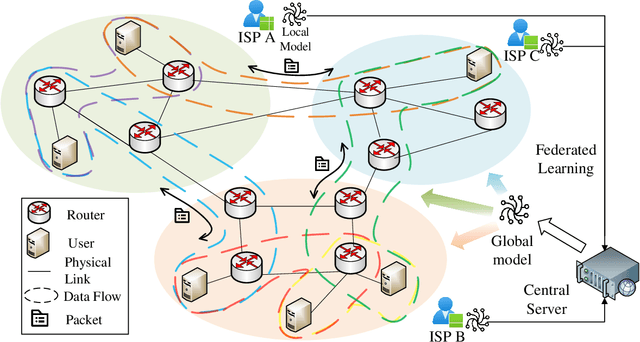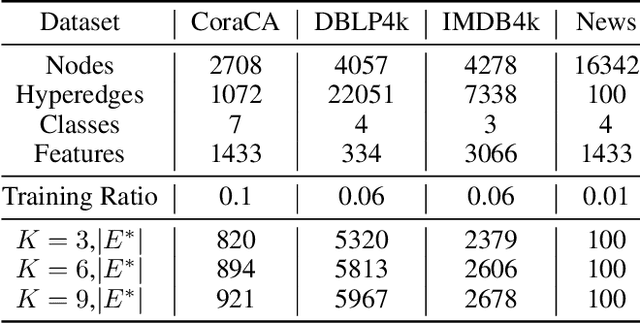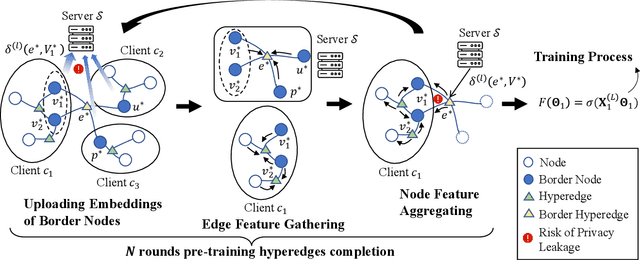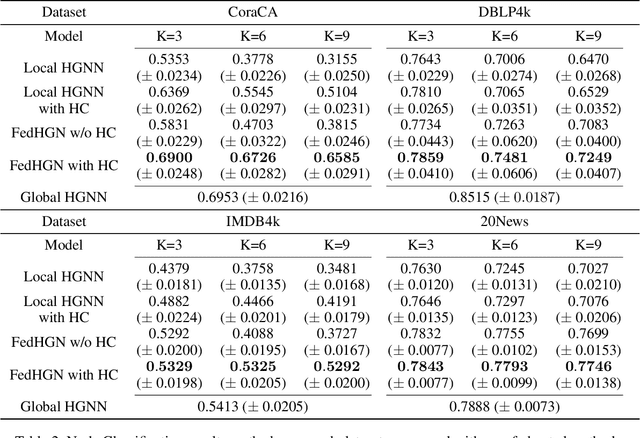Linfeng Luo
Federated Hypergraph Learning with Hyperedge Completion
Aug 09, 2024



Abstract:Hypergraph neural networks enhance conventional graph neural networks by capturing high-order relationships among nodes, which proves vital in data-rich environments where interactions are not merely pairwise. As data complexity and interconnectivity grow, it is common for graph-structured data to be split and stored in a distributed manner, underscoring the necessity of federated learning on subgraphs. In this work, we propose FedHGN, a novel algorithm for federated hypergraph learning. Our algorithm utilizes subgraphs of a hypergraph stored on distributed devices to train local HGNN models in a federated manner:by collaboratively developing an effective global HGNN model through sharing model parameters while preserving client privacy. Additionally, considering that hyperedges may span multiple clients, a pre-training step is employed before the training process in which cross-client hyperedge feature gathering is performed at the central server. In this way, the missing cross-client information can be supplemented from the central server during the node feature aggregation phase. Experimental results on seven real-world datasets confirm the effectiveness of our approach and demonstrate its performance advantages over traditional federated graph learning methods.
Large Language Model assisted End-to-End Network Health Management based on Multi-Scale Semanticization
Jun 12, 2024



Abstract:Network device and system health management is the foundation of modern network operations and maintenance. Traditional health management methods, relying on expert identification or simple rule-based algorithms, struggle to cope with the dynamic heterogeneous networks (DHNs) environment. Moreover, current state-of-the-art distributed anomaly detection methods, which utilize specific machine learning techniques, lack multi-scale adaptivity for heterogeneous device information, resulting in unsatisfactory diagnostic accuracy for DHNs. In this paper, we develop an LLM-assisted end-to-end intelligent network health management framework. The framework first proposes a Multi-Scale Semanticized Anomaly Detection Model (MSADM), incorporating semantic rule trees with an attention mechanism to address the multi-scale anomaly detection problem in DHNs. Secondly, a chain-of-thought-based large language model is embedded in downstream to adaptively analyze the fault detection results and produce an analysis report with detailed fault information and optimization strategies. Experimental results show that the accuracy of our proposed MSADM for heterogeneous network entity anomaly detection is as high as 91.31\%.
 Add to Chrome
Add to Chrome Add to Firefox
Add to Firefox Add to Edge
Add to Edge